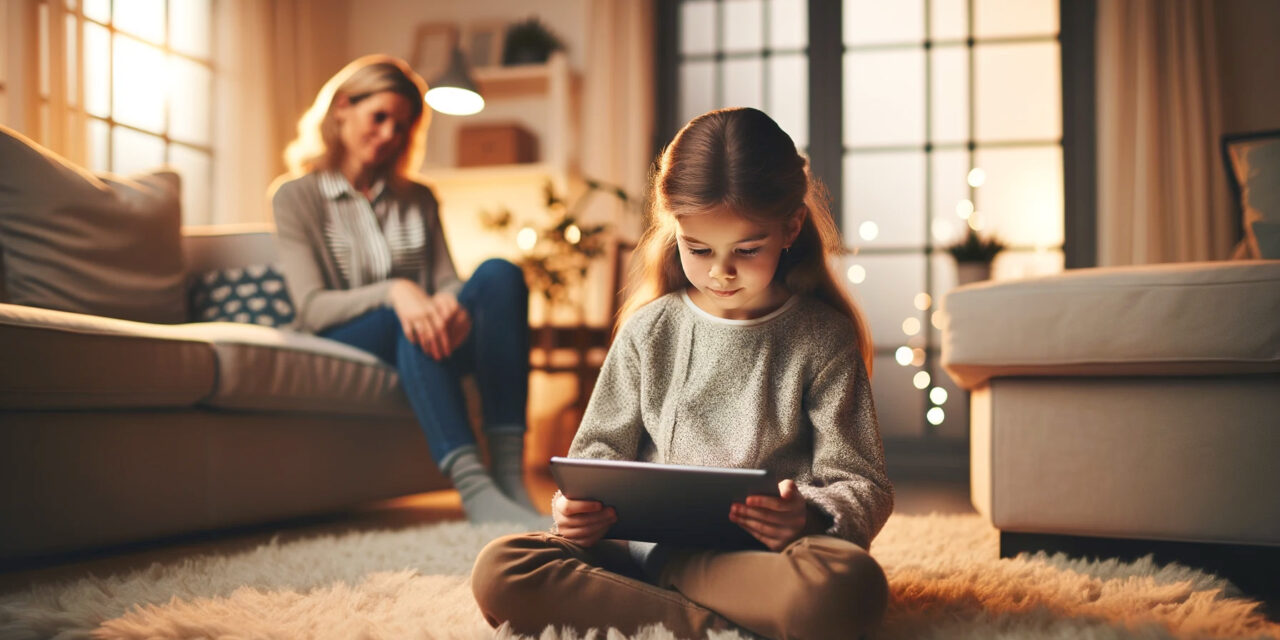Determining the recommended screen time for kids involves considerations of device usage limits, establishing healthy boundaries, and allowing for recreational screen time within balanced lifestyle parameters.
Parents and caregivers play a crucial role in supervising and setting appropriate screen time limits for children. Taking into account the child's age, it's important to balance digital activities with other fun, recreational activities such as physical play, learning, and social interactions.
Setting clear guidelines for when and for how long children can use screens, and ensuring that these boundaries are consistently enforced, can significantly impact their overall well-being.
Encouraging a variety of recreational activities beyond screen time guarantees:
- A healthy balance between digital use and physical play
- Fosters creativity
- Reduces the negative impacts associated with excessive screen us
The following post provides a more detailed answer to the question, “how much screen time is healthy for kids?”
What Are The Guidelines for Screen Time Based on Age?
Guidelines for screen time based on age aim to promote family time, tech-free periods, and the cultivation of a balanced lifestyle that aligns with children's developmental needs and diverse interests.
- Young children, aged 2-5 – it is recommended to limit screen time to one hour per day. In addition, this screen time should be focused on interactive, educational programs. Encouraging outdoor play, reading, and creative activities fosters holistic development.
- Older kids, aged 6-12 – screen time should prioritize high-quality content, limited to 2 hours daily. Designating tech-free periods during family meals and before bedtime nurtures communication and bonding.
- Adolescents, aged 13-18 – these young adults benefit from mindful use of screens, which should be well-balanced with physical activities. This might include hobbies, and face-to-face interactions for a well-rounded lifestyle.
Why Is Balancing Screen Time Important for Kids' Health?
Balancing screen time is crucial for kids' health and wellness. Not only does it influence sleep patterns, but also their social skills development, and overall cognitive and physical well-being.
Excessive use of screens can disrupt children's natural sleep patterns, which are essential for their growth and development. It can also impact their social skills as it may hinder their ability to engage in face-to-face interactions.
Extended screen time has also been linked to sedentary behavior and potential physical health issues, such as eye strain and poor posture.
Finding a balance in screen time allows children to enjoy the benefits of technology while also engaging in physical activities and offline social interactions for a well-rounded lifestyle.
What Are The Health Risks of Excessive Screen Time?
Excessive screen time poses health risks for kids, including technology dependence, impacts on online behavior, and challenges in maintaining a balanced media consumption, affecting overall well-being.
The overuse of electronic devices can lead to physical health issues such as eye strain, headaches, and disrupted sleep patterns.
Constant exposure to digital media can contribute to emotional and behavioral changes, impacting social interactions and mental well-being. Here are a few tips to help you avoid these worst-case scenarios:
- Encourage children to engage in offline activities
- Setting screen time limits
- Promoting a variety of media content
Tips for Balancing Kids' Screen Time
Balancing kids' screen time involves implementing parental control measures, promoting outdoor activities, fostering tech-savvy parenting, and establishing healthy routines that encourage a balanced lifestyle.
By setting clear and consistent rules around screen usage, parents can help their children develop a healthy relationship with technology. Furthermore, this allows kids to have a well-rounded experience that includes outdoor play and other offline activities. Not sure of how to achieve this balance? The following hacks might help:
Set Limits and Boundaries
Setting limits and boundaries for kids' screen time involves establishing clear device usage limits, cultivating digital wellness, and promoting positive internet etiquette within the family environment.
This can be achieved by implementing a structured schedule for screen time, emphasizing the importance of balance between digital and offline activities.
Encourage Other Activities
Another tip that might help is encouraging your little ones to engage in other activities. This offers several benefits like outdoor engagement, enhancing family communication, and establishing opportunities for screen-free activities to diversify children's experiences.
Engaging children in outdoor activities not only fosters physical health but also expands their connection to the natural world. Plus, it provides an avenue for deeper family bonds and allows children to develop essential social skills.
Lastly, encouraging screen-free activities enables kids to explore their creativity, problem-solving abilities, and imagination through hands-on experiences. One such activity is playing with beyblades as it fosters kids’ fine motor skills and cognitive abilities. Read this article to learn more about these toys.
Monitor Content
Monitoring content for kids entails ensuring online safety, promoting cyber safety practices, and guiding positive online behavior. A combination of these practices is necessary to safeguard their digital experience.
It is crucial to be mindful of the content children are exposed to on various online platforms as it directly impacts their mental and emotional well-being. By monitoring and filtering the content they consume, we can protect them from harmful material. More importantly, this guarantees that they’re engaging in age-appropriate, educational, and positive content.
Instilling cyber safety practices early on can help children develop a responsible and cautious approach to navigating the digital world, empowering them to recognize and mitigate potential online risks.
Lead by Example
Kids learn best through observation. So one way you can cultivate healthy digital habits is to lead by example. Whenever you interact with tech, foster a positive influence on children's relationship with technology and digital experiences.
It's crucial for parents and guardians to demonstrate healthy tech habits by:
- Limiting their own screen time
- Viewing age-appropriate content
- Engaging in meaningful discussions about online safety
By doing so, they can instill these principles in children, helping them develop a balanced and responsible approach to digital media.
Leading by example underscores the importance of respecting privacy, understanding online etiquette, and critically evaluating information.
Conclusion
In summary, parents should take a deliberate approach when it comes to balancing their kids’ screen time. Allowing your child to use tech devices for extended periods only puts them at risk. To strike a healthy balance, consider setting boundaries, encourage screen-free activities, monitor their content and lead by example.









